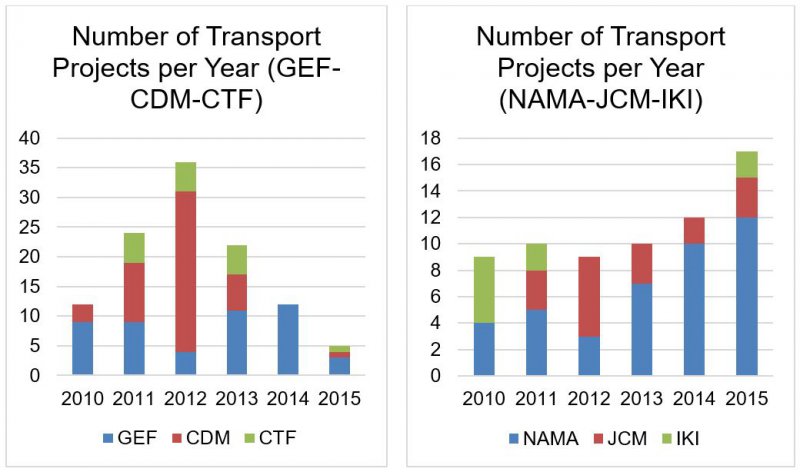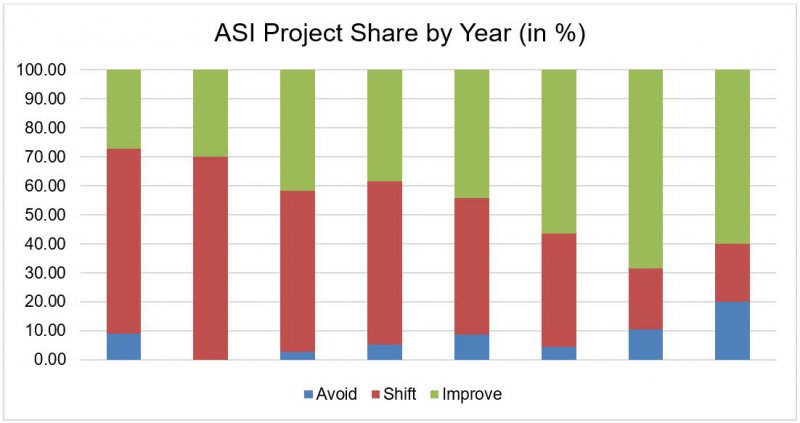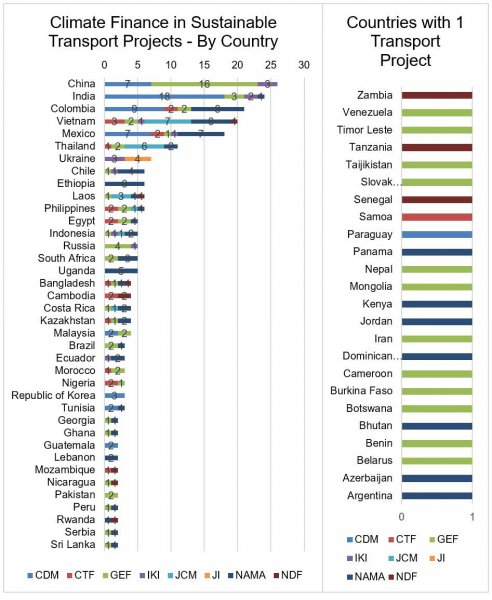SLoCaT Climate Finance Transport Database: Slow Progress in Scaling-up Low Carbon Transport through Climate Finance
[ updated November 2, 2016]
To measure the contribution of climate finance instruments (CFIs) to sustainable, low carbon transport, the SLoCaT Partnership is collecting data on transport projects from eight major CFIs: the Clean Development Mechanism (CDM), the Clean Technology Fund (CTF), the Global Environment Facility (GEF), the International Climate Initiative (IKI), the Joint Crediting Mechanism (JCM), Joint Implementation (JI), the Nationally Appropriate Mitigation Actions (NAMA), and the Nordic Development Fund (NDF).
SLoCaT also tracks developments around the Green Climate Fund, which has started to approve projects but the number of projects approved so far is still quite limited and there is not a sufficient number of transport projects that would currently justify including it as a 9th CFI in the SLoCaT Climate Finance database.
As of November 2016, SLoCaT’s Climate Finance Transport Database contains information on 277 transport projects, covering the time period from 1992 to 2016. The database captures over $3 billion on transport-focused investments by CFIs. The highest transport related allocations are made by CTF with a total of $2.1 billion, followed by NAMA with $455.9 million and GEF with $391 million.
Although the transport sector accounts for roughly a quarter of energy-related global GHG emissions, transport is quite underrepresented in the CFIs. The share of transport projects among total projects by CFIs varies from 0.6% for CDM, 1.8% for GEF, 3.2% for IKI and 8.7% for CTF. Their activities are still very limited and they have yet to emerge as significant contributor to achieve sustainable development goals. Only NAMA has a strong focus on transport with 49.6% of investments in the sustainable mobility field.
Since 2010, the overall trend for CDM, CTF and GEF shows a peak of the amount of transport projects in 2012 followed by a decreasing trend to the present. In the same period NAMA projects increased, while JCM and IKI projects also slightly decreased (Figure 1).

Figure 1: Transport project trends by climate finance instrument
For climate finance to be effective in catalyzing transformative action on transport and climate change it is important to have a balance between ‘Avoid’, ‘Shift’ and ‘Improve’ strategies, yet so far climate finance has had a disproportionate focus on ‘Improve’ and a lesser extent ‘Shift’ strategies to date. These categories account for 90% of all CFI transport projects funded, with ‘Improve’ projects generally increasing over time. Though studies show that ‘Avoid’ strategies can have a comparable impact to ‘Shift’ and ‘Improve’ strategies, their share of climate finance-funded transport projects remains marginal (Figure 2). Thus, climate finance instruments should strive to achieve a better balance among these categories over time.

Figure 2: Avoid-Shift-Improve project share from climate finance
A growing number of countries are applying climate finance to sustainable transport projects. In comparison to May 2015, the number of countries making use of CFIs for transport has increased from 50 to 62, and the number of countries with two or more CFI-funded transport projects has increased from 29 to 38 (Figure 3). However, nearly 140 countries still have no transport projects funded by any of the major CFIs, indicating a need to increase access to climate finance in the transport sector to achieve the transformational change required in the coming decades.

Figure 3: Number of countries with transport projects funded by major climate finance instruments
In sum, transport makes a significant contribution to global GHG emissions but to date climate finance facilities have not invested proportionally to the sector’s climate impact. Transport infrastructure in developing countries will require significant investments, and CFI-funded transport projects can help minimize costs and realize lower emission development pathways.
—–
Note:
The SLoCaT Finance Transport Database is a work in progress and the information is not complete. The data shown may contain errors or omissions and cannot be considered exhaustive. The SLoCaT Partnership is appealing to all relevant organizations to provide comments and additions to the database making use of the provided spaces in the Database.